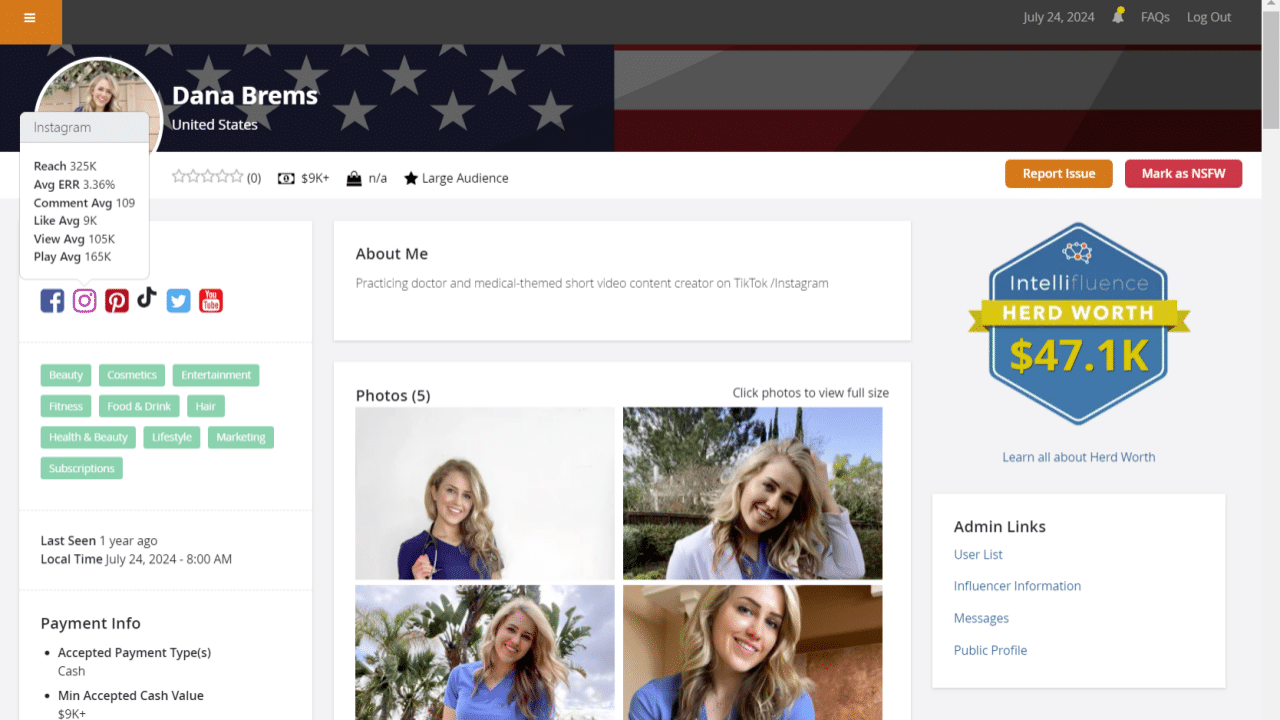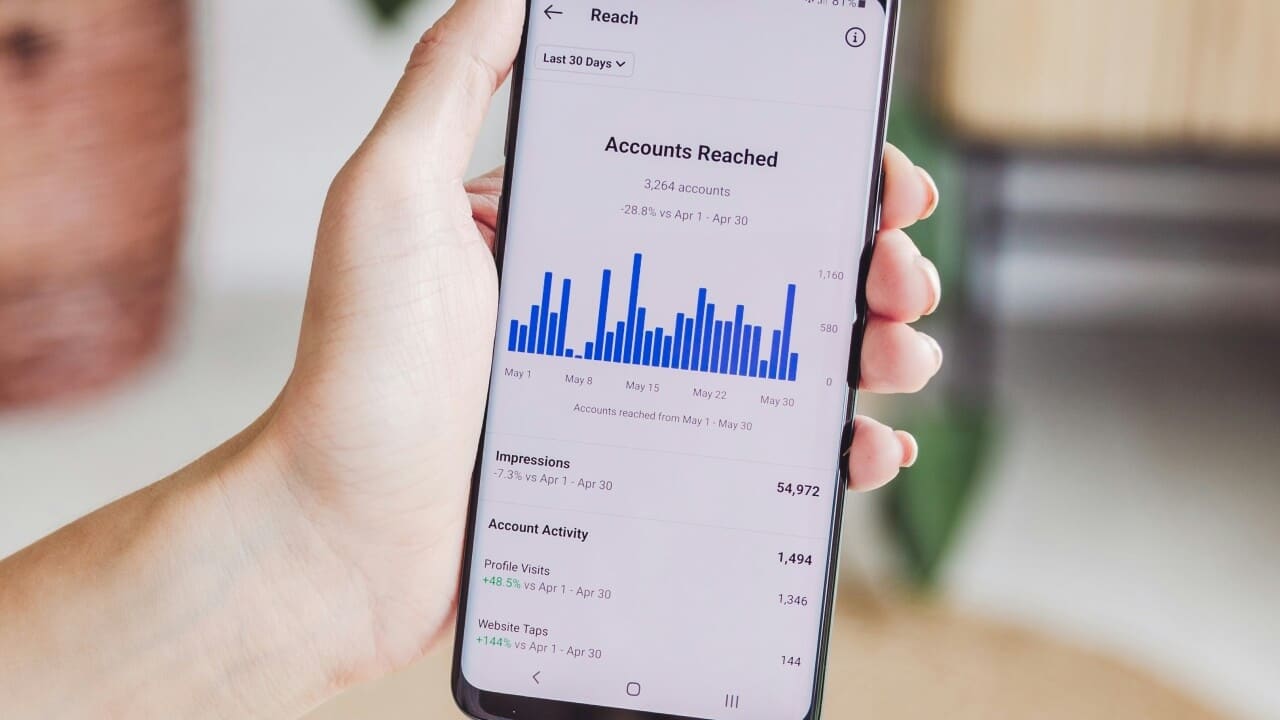In the dynamic realm of social media, understanding and optimizing engagement rates is crucial for influencers aiming to measure and enhance their interactions with audiences. But what is a “good” engagement rate? This article dives into the specifics of engagement rates across various platforms, including YouTube, X (formerly Twitter), Instagram, Facebook, and TikTok, providing a nuanced understanding of what these metrics mean and how they can be improved.
What is an Engagement Rate?
Engagement rate is a metric that measures the level of interaction content receives from its audience, typically calculated as the percentage of the audience that engages with the content through likes, comments, shares, and other forms of active responses, relative to the number of followers or views.
On Intellifluence, you and brands can easily view the engagement rates associated with your Instagram, TikTok, and YouTube accounts by hovering over the applicable icon on your Intellifluence profile page. When you hover over the social media icon, you will see your reach, average engagement rate, comment average, like average, view average, and play average. The engagement rate information shown on Intellifluence is based on posts that are at least a week old but no older than three months.

Average Influencer Engagement Rate:
Generally, an industry-standard engagement rate on social media is considered to be around 1% to 3%. However, this can vary significantly depending on the platform, the content’s nature, the industry, and the specific audience demographics.
Platform-Specific Engagement Insights
YouTube:
On YouTube, engagement rates are often lower compared to other platforms due to the nature of video content, which demands more viewer time and investment. An engagement rate of 0.5% to 1.5% is typically seen as solid, especially for larger channels where even a small percentage represents significant interaction.
X (formerly Twitter):
For X, engagement can include retweets, comments, and likes. A healthy engagement rate on X would hover around 0.2% to 0.9%, with higher rates often driven by tweets that are timely, provocative, or highly relevant to current trends.
Instagram:
Instagram traditionally sees higher engagement rates, ranging from 1% to 3.5%. This is facilitated by the platform’s visual nature, which encourages quick interactions such as likes and comments.
Facebook:
Facebook’s engagement can vary widely, with an average influencer engagement rate of 0.5% to 1.5%. Engagement on Facebook is heavily influenced by the platform’s algorithm, which prioritizes content that generates conversation and meaningful interaction.
TikTok:
TikTok shows some of the highest engagement rates across social media platforms, sometimes averaging as high as 3% to 9%. The platform’s design, which promotes viral content through a highly personalized “For You Page,” allows for rapid and widespread content dissemination.
Currently, Intellifluence offers engagement rate data for Instagram, TikTok, and YouTube. Brands may request that you provide them with your audience demographic information directly, but as an influencer, you are not required to do so. Keep in mind that if a brand requests demographic information and you choose not to provide the data, they may decide not to collaborate with you.

Featured Influencer: Lucy Regler
I am a UK based Beauty Influencer/Content Creator known as Makeup by Lucy. Makeup, Beauty & Fashion is a massive passion of mine. I would love the opportunity to work with yourselves via promoting your products on my social media.
Best Practices for Increasing Engagement Rates
- Content Quality and Relevance:
High-quality, relevant content is fundamental. Understand your audience’s preferences and pain points to create content that resonates with them. For instance, a makeup tutorial on YouTube needs to be visually clear and informative, while a TikTok dance challenge should be energetic and shareable. - Consistent Posting Schedule:
Maintain a regular posting schedule to keep your audience engaged and anticipate your content. This consistency helps build a routine for your followers, increasing the likelihood of regular interaction. - Engage with Your Audience:
Actively engaging with your audience by responding to comments, participating in discussions, and even asking your followers questions can significantly enhance engagement rates. For example, conducting a Q&A session on Instagram stories invites direct interaction. - Leverage Trends and Hashtags:
Stay updated with trends and use relevant hashtags to increase the visibility of your posts across platforms. Participating in popular challenges or discussions can attract a broader audience. - Utilize Analytics:
Use platform analytics tools to track what works and what doesn’t. This data-driven approach allows you to refine your strategy continuously, focusing on content types and topics that generate the most engagement.
Successful Influencers and Campaigns
Several influencers have mastered the art of engagement:
- YouTube: PewDiePie has maintained high engagement through his humorous and relatable gaming content, consistently adapting to the interests of his audience.
- Instagram: Huda Kattan uses her platform to share beauty tips and product reviews, engaging her followers through tutorials and responsive comments.
- TikTok: Charli D’Amelio has leveraged her dance skills to create viral content that resonates with a massive audience, making her one of the most followed on the platform.
While the “industry standard” for good engagement rates can provide a benchmark, the most effective strategies are those tailored to specific platforms and audience needs. By understanding the nuances of each platform and employing best practices tailored to your unique audience, you can significantly enhance your engagement and, consequently, your influence and success in the competitive world of social media.

SallyBot is committed to helping users get the most out of Intellifluence. By helping brands create campaigns, providing unparalleled customer service and offering useful advice, nothing makes SallyBot happier than hearing she is liked… Really, really liked.






